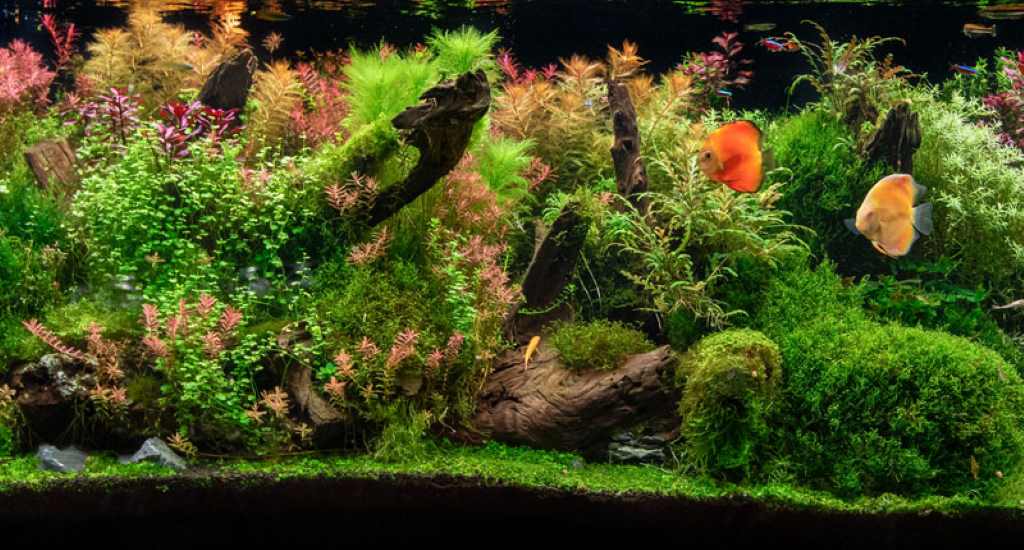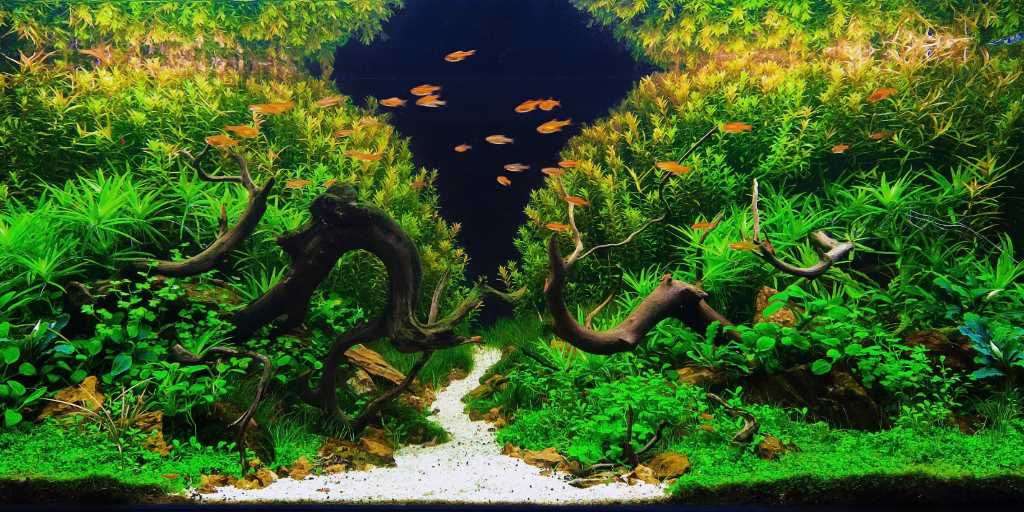How to Create a Stunning Aquarium Landscape: A Step-by-Step Guide

An aquarium isn’t just a tank of water; it’s a living canvas where you can paint underwater landscapes that captivate and inspire. Designing a stunning aquarium landscape is an art form that combines creativity, technical skill, and a deep appreciation for the natural world. In this comprehensive guide, we will take you through the process of creating an aquarium landscape that will transform your tank into a breathtaking underwater paradise.
1. Plan Your Theme and Layout
The first step in creating a stunning aquarium landscape is to plan your theme and layout. Do you want to recreate a lush rainforest, a rugged mountain range, or a serene underwater meadow? The possibilities are endless. Consider the types of fish and plants you want to keep and ensure that they are compatible with your chosen theme.
Once you have a theme in mind, sketch out a layout on paper. Decide where you want to place your hardscape elements, such as rocks and driftwood. Think about creating depth and visual interest by varying the heights of these elements. Use the rule of thirds to create a balanced and aesthetically pleasing composition.

2. Choose the Right Hardscape
The hardscape forms the backbone of your aquarium landscape. It provides structure, visual interest, and hiding places for your fish. When selecting rocks and driftwood, look for pieces that are aquarium-safe and free of any harmful chemicals.
For a natural look, choose rocks that are similar in color and texture. Arrange them in a way that creates caves, overhangs, and other interesting features. Driftwood can be used to create stunning focal points and add a sense of depth to your landscape. Soak it in water for several days before adding it to your aquarium to prevent it from leaching tannins into the water.
3. Prepare Your Substrate
The substrate is the layer of material that covers the bottom of your aquarium. It provides a place for plants to root and helps to maintain water quality. There are many different types of substrate available, so choose one that is suitable for your plants and fish.
Before adding the substrate to your aquarium, rinse it thoroughly to remove any dust or debris. Then, create a sloping layer, with the substrate being deeper at the back of the aquarium. This will create a sense of depth and make it easier to plant taller plants at the back. If you’re considering adding pothos in aquarium setups, it’s important to plant them correctly to ensure they thrive. For more detailed guidance, you can check out https://aquariumfishblog.com/aquarium-plants/how-to-plant-pothos-in-aquarium/.
4. Add Plants Strategically
Plants play a vital role in an aquarium landscape. They provide oxygen, absorb nutrients, and create a natural and vibrant environment for your fish. When selecting plants, consider their growth rate, light requirements, and compatibility with your fish.
Start by planting taller plants at the back of the aquarium and gradually work your way forward, using shorter plants in the middle and foreground. Use a variety of textures and colors to create visual interest. Consider adding some floating plants to create a sense of depth and provide shade for your fish.
5. Introduce Fish Gradually
Once your aquarium landscape is complete, it’s time to add your fish. Start by adding a few hardy fish and gradually increase the number over time. This will give your aquarium’s biological filter time to establish itself and prevent ammonia spikes that can harm your fish.
Choose fish that are compatible with each other in terms of size, temperament, and water requirements. Avoid overcrowding your aquarium, as this can lead to stress and disease.
6. Maintain Water Quality
Maintaining good water quality is essential for the health of your fish and plants. Test your water regularly for ammonia, nitrite, nitrate, pH, and other parameters. Perform partial water changes every week to remove any accumulated waste products and replenish essential minerals.
Regularly clean your filter and replace any filter media as needed. Vacuum the substrate to remove any debris that may be trapped between the grains. Prune your plants regularly to prevent them from overgrowing and blocking light from reaching the lower levels of the aquarium.
7. Lighting and Filtration
The right lighting and filtration are crucial for a thriving aquarium landscape. Choose aquarium lights that provide the appropriate spectrum and intensity for your plants. Consider using a timer to create a natural day/night cycle for your fish.
Invest in a high-quality filter that is capable of handling the bioload of your aquarium. A good filter will remove harmful waste products and keep your water crystal clear.
8. Aquascaping Tips and Tricks
Here are some additional tips and tricks to help you create a stunning aquarium landscape:
- Use the Golden Ratio: The Golden Ratio is a mathematical principle that can be used to create aesthetically pleasing compositions. Apply this principle to your aquarium layout by dividing the tank into thirds both horizontally and vertically. Place your focal points at the intersections of these lines.
- Create Depth: Use a variety of heights and textures to create a sense of depth in your aquarium landscape. Place taller plants and rocks at the back and gradually decrease the height as you move forward.
- Use Contrast: Contrast can be used to create visual interest and highlight certain elements in your landscape. Use contrasting colors, textures, and shapes to draw the eye to your focal points.
- Add Movement: Incorporate some movement into your landscape by adding a small waterfall or a bubbler. This will create a sense of dynamism and attract attention.
- Be Patient: Creating a stunning aquarium landscape takes time and patience. Don’t be afraid to experiment and make adjustments as needed. Enjoy the process and watch as your underwater paradise comes to life.
Conclusion
Creating a stunning aquarium landscape is a rewarding and fulfilling experience. By following these tips and using your creativity, you can transform your tank into a breathtaking underwater world that will bring you years of enjoyment. Remember, the key is to plan carefully, choose the right elements, and maintain good water quality. With a little effort and dedication, you can create an aquarium landscape that is truly unique and inspiring. Happy aquascaping!








